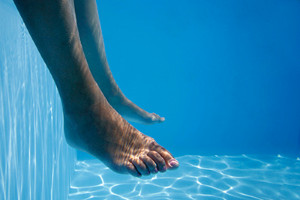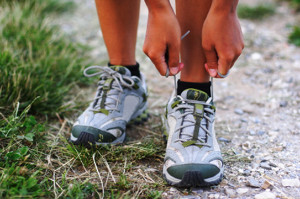Items filtered by date: October 2020
What Can I Do to Manage My Gout?
If you have ever experienced a gout attack, then you are familiar with the sudden pain and swelling that this condition can cause in the joints of the feet. Fortunately, there are several ways to manage gout. Your doctor may prescribe specific medications or injections to minimize the joint pain, swelling, and inflammation caused by gout. Lifestyle factors can also play a role in managing this condition. Avoiding foods that are high in purines, such as organ meats and seafood, and staying well-hydrated by drinking plenty of water can help reduce the frequency of attacks. Immobilizing and elevating the affected foot may also help you find relief, as resting your foot can decrease swelling. For more information on how to best manage gout, consult with a podiatrist today.
Gout is a foot condition that requires certain treatment and care. If you are seeking treatment, contact Leonora Fihman, DPM from California. Our doctor will treat your foot and ankle needs.
What Is Gout?
Gout is a type of arthritis caused by a buildup of uric acid in the bloodstream. It often develops in the foot, especially the big toe area, although it can manifest in other parts of the body as well. Gout can make walking and standing very painful and is especially common in diabetics and the obese.
People typically get gout because of a poor diet. Genetic predisposition is also a factor. The children of parents who have had gout frequently have a chance of developing it themselves.
Gout can easily be identified by redness and inflammation of the big toe and the surrounding areas of the foot. Other symptoms include extreme fatigue, joint pain, and running high fevers. Sometimes corticosteroid drugs can be prescribed to treat gout, but the best way to combat this disease is to get more exercise and eat a better diet.
If you have any questions please feel free to contact our offices located in Encino and Brentwood, Los Angeles, CA . We offer the newest diagnostic and treatment technologies for all your foot and ankle needs.
All About Plantar Hyperhidrosis
 Plantar hyperhidrosis is a condition that causes excessively sweaty feet. It is fairly common, affecting 1-3% of the population. Plantar hyperhidrosis typically begins during childhood or adolescence. If you have this condition, you will find that both feet are often excessively sweaty, though the amount of sweating can range from mild to severe and constant. More severe cases of plantar hyperhidrosis can increase your risk of developing other foot problems, such as fungal or bacterial infections and friction blisters. If you suffer from plantar hyperhidrosis, there are many treatments available, including topical antiperspirants, iontophoresis, botox injections, and oral medications. To find out which treatments may be right for you, please consult with a podiatrist today.
Plantar hyperhidrosis is a condition that causes excessively sweaty feet. It is fairly common, affecting 1-3% of the population. Plantar hyperhidrosis typically begins during childhood or adolescence. If you have this condition, you will find that both feet are often excessively sweaty, though the amount of sweating can range from mild to severe and constant. More severe cases of plantar hyperhidrosis can increase your risk of developing other foot problems, such as fungal or bacterial infections and friction blisters. If you suffer from plantar hyperhidrosis, there are many treatments available, including topical antiperspirants, iontophoresis, botox injections, and oral medications. To find out which treatments may be right for you, please consult with a podiatrist today.
If you are suffering from hyperhidrosis contact Leonora Fihman, DPM of California. Our doctor can provide the care you need to attend to all of your foot and ankle needs.
Hyperhidrosis of the Feet
Hyperhidrosis is a rare disorder that can cause people to have excessive sweating of their feet. This can usually occur all on its own without rigorous activity involved. People who suffer from hyperhidrosis may also experience sweaty palms.
Although it is said that sweating is a healthy process meant to cool down the body temperature and to maintain a proper internal temperature, hyperhidrosis may prove to be a huge hindrance on a person’s everyday life.
Plantar hyperhidrosis is considered to be the main form of hyperhidrosis. Secondary hyperhidrosis can refer to sweating that occurs in areas other than the feet or hands and armpits. Often this may be a sign of it being related to another medical condition such as menopause, hyperthyroidism and even Parkinson’s disease.
In order to alleviate this condition, it is important to see your doctor so that they may prescribe the necessary medications so that you can begin to live a normal life again. If this is left untreated, it is said that it will persist throughout an individual’s life.
A last resort approach would be surgery, but it is best to speak with your doctor to find out what may be the best treatment for you.
If you have any questions please feel free to contact our offices located in Encino and Brentwood, Los Angeles, CA . We offer the newest diagnostic and treatment technologies for all your foot and ankle needs.
What Kind of Shoe Should I Work Out In?
 When it comes to working out, one of the most important accessories you can have is a pair of workout shoes designed for the type of exercise you like to practice. For example, if you’re going to be practicing weight lifting, you’re not going to want to wear thick-soled running shoes. Weight-lifting is best practiced with flat-soled shoes as they help with keeping proper form, and provide a firm grip on the ground. Cardio and strength training require a different style of shoe. Because you’ll be constantly moving and jumping around, you’ll want a shoe with extra cushion and support, as well as a wide toe. For professional advice on which shoes you should be wearing while working out, please speak with a podiatrist.
When it comes to working out, one of the most important accessories you can have is a pair of workout shoes designed for the type of exercise you like to practice. For example, if you’re going to be practicing weight lifting, you’re not going to want to wear thick-soled running shoes. Weight-lifting is best practiced with flat-soled shoes as they help with keeping proper form, and provide a firm grip on the ground. Cardio and strength training require a different style of shoe. Because you’ll be constantly moving and jumping around, you’ll want a shoe with extra cushion and support, as well as a wide toe. For professional advice on which shoes you should be wearing while working out, please speak with a podiatrist.
Finding a properly-fitting shoe is important in reducing injuries and preventing foot problems. For more information about treatment, contact Leonora Fihman, DPM from California. Our doctor will treat your foot and ankle needs.
Proper Shoe Fitting
A common concern when it comes to foot health, having properly fitted shoes can help prevent injuries to the foot. Out feet affect our posture and gait, which in turn affects the biomechanics and overall bodily structure. With 33 joints, 26 bones, and over 100 ligaments, the potential for serious injury is much greater than one realizes. Although the feet cease growth in adulthood, they still change shape as they mature. Here are some factors to consider when it comes to investing in proper fitting shoes:
- Be sure the shoes fit correctly right away
- Ensure the ball of your foot fits comfortably in the widest portion of the shoes
- Even though they may look fashionable, improper fitting shoes can either create adverse conditions or exacerbate existing ones you may already have
- Walk along a carpeted surface to ensure the shoes comfortably fit during normal activity
Keeping in mind how shoes fit the biomechanics of your body, properly-fitting shoes are vitally important. Fortunately, it is not difficult to acquire footwear that fits correctly. Be sure to wear shoes that support the overall structure of your body. Do your feet a favor and invest in several pairs of well-fitted shoes today.
If you have any questions please feel free to contact our offices located in Encino and Brentwood, Los Angeles, CA . We offer the newest diagnostic and treatment technologies for all your foot and ankle needs.
Types of Achilles Tendon Injuries
 Tendons are bands of tissue that connect muscles and bones together. The Achilles tendon is located on the back of the ankle and connects the calf muscles to the heel. Tendonitis occurs when the tendon becomes inflamed. Tendinosis occurs when the tendon degenerates, usually due to overuse. Paratenonitis is a result of tissue around the tendon becoming inflamed and thickened, eventually attaching to the tendon. Insertional Achilles tendinopathy happens when the fibers attaching to the heel bone inflame and eventually degenerate. Another serious injury that can happen is an Achilles tendon rupture, which will make walking and standing extremely difficult and will likely require surgery. Because of the seriousness of Achilles tendon injuries, seeing a podiatrist for diagnosis and treatment is very important.
Tendons are bands of tissue that connect muscles and bones together. The Achilles tendon is located on the back of the ankle and connects the calf muscles to the heel. Tendonitis occurs when the tendon becomes inflamed. Tendinosis occurs when the tendon degenerates, usually due to overuse. Paratenonitis is a result of tissue around the tendon becoming inflamed and thickened, eventually attaching to the tendon. Insertional Achilles tendinopathy happens when the fibers attaching to the heel bone inflame and eventually degenerate. Another serious injury that can happen is an Achilles tendon rupture, which will make walking and standing extremely difficult and will likely require surgery. Because of the seriousness of Achilles tendon injuries, seeing a podiatrist for diagnosis and treatment is very important.
Achilles tendon injuries need immediate attention to avoid future complications. If you have any concerns, contact Leonora Fihman, DPM of California. Our doctor can provide the care you need to keep you pain-free and on your feet.
What Is the Achilles Tendon?
The Achilles tendon is a tendon that connects the lower leg muscles and calf to the heel of the foot. It is the strongest tendon in the human body and is essential for making movement possible. Because this tendon is such an integral part of the body, any injuries to it can create immense difficulties and should immediately be presented to a doctor.
What Are the Symptoms of an Achilles Tendon Injury?
There are various types of injuries that can affect the Achilles tendon. The two most common injuries are Achilles tendinitis and ruptures of the tendon.
Achilles Tendinitis Symptoms
- Inflammation
- Dull to severe pain
- Increased blood flow to the tendon
- Thickening of the tendon
Rupture Symptoms
- Extreme pain and swelling in the foot
- Total immobility
Treatment and Prevention
Achilles tendon injuries are diagnosed by a thorough physical evaluation, which can include an MRI. Treatment involves rest, physical therapy, and in some cases, surgery. However, various preventative measures can be taken to avoid these injuries, such as:
- Thorough stretching of the tendon before and after exercise
- Strengthening exercises like calf raises, squats, leg curls, leg extensions, leg raises, lunges, and leg presses
If you have any questions please feel free to contact our offices located in Encino and Brentwood, Los Angeles, CA . We offer the newest diagnostic tools and technology to treat your foot and ankle needs.


